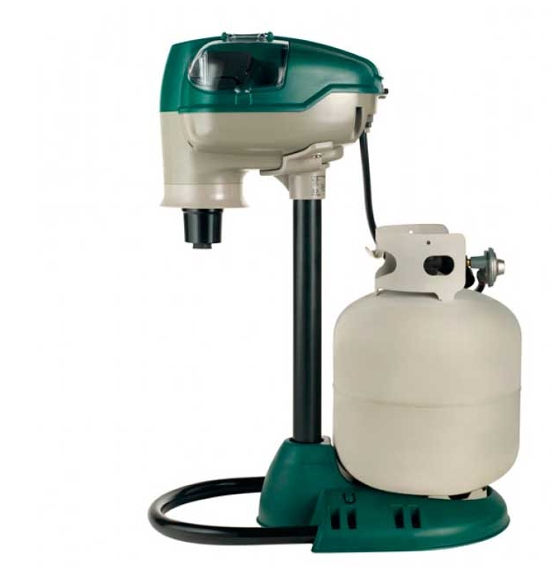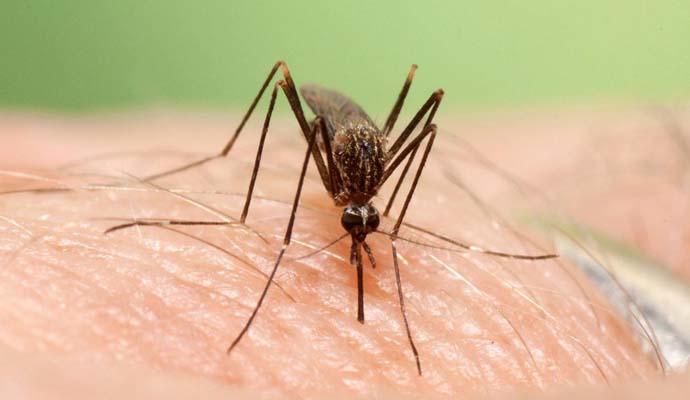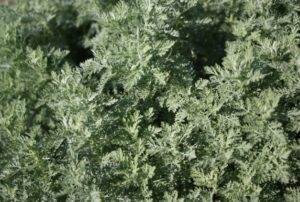
Mosquitoes are one of the most annoying enemies of humanity. No wonder there are so many insecticides available in stores. Manufacturers compete in ingenuity and come up with more and more new types of mosquito traps. Today we will talk about them.
We have thoroughly studied all types of traps that are on the market today and will help you choose the most effective ones. Let’s talk about the most famous manufacturers and their best products, and most importantly, find out what experienced users think about all this.
Among the trusted manufacturers of electric traps, I will highlight: Tefal Mosquito Protect, Flowtron, Mosquito Magnet®.
Content:
• What are mosquito traps?
• Best mosquito traps for home
• The best water traps for mosquitoes
• The best CO2 mosquito traps
• The best heat traps for mosquitoes
• Best propane mosquito traps
• The best homemade and natural mosquito traps
As a rule, all mosquito killers operate on the same principle. The device lures the mosquito into a trap space from which it can no longer escape – and inside the insect dies from poison or dehydration. Mosquitoes love human smell, heat, and water. It is on this that the principle of operation of all traps is built. In different traps, one or several “mosquito weaknesses” may turn out to be the bait. All this is associated in the mosquito with food and reproduction – and he flies in the direction of the trap without looking back.
Well, then the differences begin. By type, electric traps are divided into CO2- (carbon dioxide that a person releases when breathing), and propane traps. In some models, heat and even light can be found as bait.
Electric CO2 traps mimic human breathing. Insects feel the gas released into the atmosphere for tens of meters and perceive it as a trace of human life.
Propane mosquito killers work on a similar principle, like the Mosquito Magnet®, the most powerful, expensive and effective mosquito trap. True, they can only be used on the street! We devoted a whole section to this type of traps at the very end of the material. The trick to propane is that when oxidized, this gas forms moisture and CO2. Both attract mosquitoes! And at the same time – and some other winged insects.
Separately, we single out indoor traps, since most of us still live in apartments and we need safe and non-toxic traps. Electric traps are equally effective outdoors and at home: after all, in this case, carbon dioxide acts as both a bait and a destructive environment. They are bought much more often than propane counterparts. Largely due to a more affordable price and good performance.
With heat and light, everything is clear: light attracts and hypnotizes almost all winged insects at night, and, again, they perceive heat as a factor in reproduction and food.
What are mosquito traps?
But the differences between specific types of traps do not end there. Designers and inventors came up with a lot of tricks that made their product unique. We have selected 6 of the most common types of mosquito traps for this review. These are heat and water traps, CO2 and UV traps, homemade traps and propane traps – there are a lot of options! But what are their fundamental differences?
- Heat traps (as the name implies, they attract insects with heat). As a rule, these are massive units that can be used on the street or in a large house.
- Water traps – quite effective on the street and at home. The main trend in this direction is the combination of the possibilities of “water hunting” and CO2. All such traps are equipped with a special tray for water and make it easy to dispose of the destroyed mosquitoes. They cost an order of magnitude cheaper than heat traps.
- CO2 traps. But carbon dioxide is not used in these traps alone. As a bonus, it is also installed on their developments by manufacturers of other “anti-mosquito devices”. The simplest carbon dioxide traps are inexpensive. The most inconvenient thing about working with them is buying gas cylinders!
- UV traps for the home – these traps will protect your family from unpleasant gases and odors. They destroy insects with light. And the “light traps” cost quite a bit. Make sure that replacement bulbs are available in the shops of your city or immediately buy a few lamps in reserve – these components will definitely come in handy for you.
- Propane traps, like the Mosquito Magnet® mosquito killer. This is definitely not a cheap solution for the street. It is time-tested and enjoys constant popularity with the consumer.
- Natural and homemade traps. Homemade traps are extremely affordable, but not as effective as we would like. However, if you are a fan of ecology and budget solutions, then why not try it? The best electric CO2 mosquito traps
We have already written that such traps imitate human breathing by releasing carbon dioxide. Well, then they suck the flying insects either into the net or into the receiving container. But where does the gas come from in these devices? There are two options. The most common involves the supply of CO2 from a special cylinder. As a rule, these are exclusively traps for the street. When choosing a trap with a balloon, remember that the gas should automatically close when the power is turned off.
• Tefal Mosquito Protect MN4015F1
• Flowtron Insect Killer BK15ER
Best outdoor mosquito traps
Propane traps are considered the most effective. Propane entering the catalytic burner releases carbon dioxide and moisture. Everything is formed naturally, literally before your eyes. It remains to add bait – and mosquitoes will not fly past. It is recommended to install such traps between the house and the place where insects live permanently. The distance from the house must be at least 4 meters.
How do outdoor propane mosquito traps work?
First, let’s figure out how we attract the attention of mosquitoes: - CO2: Humans breathe in oxygen and breathe out carbon dioxide, which is the strongest natural attractant for mosquitoes. Mosquitoes smell it at a distance of 20 m and rush to their source. As a result, we have bites, itching and ruined weekends.
- Heat and smell of the human body. It is known that thermoregulation of the body is a constant process that leads to sweating and heat removal from the surface of the skin. Sweat is excreted by the sweat glands located throughout the body. We may not notice it, but mosquitoes feel everything and fly to the smell.
Thus, the main task of propane traps is to divert the attention of mosquitoes from humans and attract them to the trap. How is this possible? By emitting CO2 and using special baits to trap. Mosquitoes die quickly without water, so they won’t live long in a trap!
It is recommended to install the unit between the house and places such as a lake, a pond, a swamp, etc. Remember the distance to the house is at least 4 m! Provided the device is properly positioned, it will serve as a barrier between insects and humans.
Remember! The most important thing is to start the propane trap at the right time! Turn them on at the very beginning of the mosquito season and you will have a better chance of interrupting the reproductive cycle of mosquitoes and reducing their numbers in your area.
Advantages of propane traps:
• In addition to mosquitoes, they catch midges and other biting insects.
• Many models perform a number of tasks: emit CO2, radiate heat, ie mimic the life processes of the human body and thus attract more mosquitoes.
• You can choose wired or wireless model.
• The propane trap is easy to set up and use.
Cons of propane traps:
• Propane is a rather expensive consumable (one bottle will last only 3-4 weeks).
• Propane is not included and must be purchased separately.
When choosing a propane trap, be guided by its capacity / coverage area, price and method of feeding. However, you don’t have to worry too much about searching. We studied traps from different manufacturers, market reviews and sales statistics and selected the best ones for you. - Also, as a bait for traps of this type, the bait OCTENOL is needed. This is an important part of the effective operation of the trap. Octenol is found in the air exhaled by animals and this component is important for finding mosquito traps. This lure can be purchased from this link. //octenol.shop/
-

Mosquito Magnet® Pioneer mosquito killer The Executive is the most powerful and expensive model in the Magnet family. Other models – Independence, Patriot, Defender and LIberty are much cheaper.
Users note a significant reduction in the number of mosquitoes. For people with allergies, this trap may be the only possible way to eliminate mosquitoes. It is also important that this wireless device is powered by rechargeable batteries.
Other than that, it’s a typical high-end trap. What are the downsides of users? First, it requires a lot of maintenance (like any other trap): replacing propane tanks, cleaning the tank, and regularly changing the bait.

- Electric trap Flowtron Mosquito PowerTrap MT Flowtron is also a very famous American trap manufacturer. Users compare this model with traps from other manufacturers and noticed that Flowtron is safe, reliable and performs better than other devices. In addition, this model uses all sorts of baits to attract mosquitoes: CO2, chemicals, sticky strips, heat generation, flashing lights, suction –> more chances of a big catch!
We found only one minus. Some users are annoyed by the flashing lights of the trap. The best mosquito traps for the home
Formally, a variety of types of squeaker traps are suitable for home use. Even some chemical devices can be installed in apartments and rooms. But buyers have already formed a logical connection between the concept of “home trap” and light / heat traps for mosquitoes.
These traps need to be connected to the mains at all times, but they won’t add much to your electricity bill. They use UV light, but they will not interfere with the sleep of even the most capricious children. The advantages of such devices are their high environmental friendliness and compactness. And also – in the ability to kill a variety of flying reptiles. The disadvantages include the relatively high noise level from the fan and the constant dependence on electricity. When the electricity is turned off from some models, insects can easily fly out …

Mosquito trap at home Tefal Mosquito Protect This gadget is very environmentally friendly. To kill mosquitoes, its developers used a small UV lamp that emits white light. The product card states that the light bulb can be easily replaced with a new one as soon as its life expires. The retractable “mosquito trap” from which you will shake out dehydrated mosquitoes is easy to clean and simplifies the procedure for updating the trap.
Experienced users of the device specify that it needs to be cleaned once a month. The only trouble is that at this point some mosquitoes may still move in mosquito agony. However, the device has other disadvantages. People complain about the loud fan sound and the lack of a timer in the model. Reports on its effectiveness also vary. Someone writes about hundreds of caught creatures, but someone was unlucky – a few units from the mosquito family fell into the trap. Large powerful outdoor mosquito killers
Flowtron Mosquito PowerTrap MT-275 The most effective and versatile trap! This trap does not need an outlet: it runs on propane and a small AA battery.
“The SkeeterVac SV5100 has definitely helped reduce the mosquito population, but that doesn’t eliminate them all. I have found this to be an effective mosquito control tool, especially when used in conjunction with other methods. For example, in addition to SkeeterVac 24/7, I have eliminated all sources of standing water in the yard – since the beginning of April, just in case,” = users say. Also, you should keep in mind that a propane tank lasts about 3 weeks , and the bait – for a month.
Tips from users:- Clean your trap regularly. The more careful you are with the device, the longer the device lasts (on average from 3 to 5 years).
- Never set up a SkeeterVac trap near where you are, otherwise you will only attract insects to you. The best place to trap is near a source of running water.
- When you open the mosquito box to check how many insects have been caught, cover it with a transparent cover, otherwise live insects will fly out.
- If a trap does not work, it does not mean that it is not effective. Maybe it’s the type of mosquito – change the bait.
The best water traps for mosquitoes
Most users note the superiority of such devices over light traps. H20 traps are distinguished by the obligatory presence of an open tray with water. Recall that mosquitoes lay their eggs in the aquatic environment, but very quickly drown in any liquid. So the H20 can be both a bait and a killer at the same time. Although most often such traps combine light / water technologies.
Their plus is that for such models you do not need to buy additional “components”: gas cylinders, attractants, poisons … Well, they are cheaper than propane counterparts! True, you still need to take care of water traps: for example, add and replace water. And also – to remove the victims caught during the shift. And this “mosquito soup” can scare some with its unpleasant appearance …
Dyntrap Insect Trap, 1/2 Acre Pole Mount With Water Tray Let’s analyze the advantages and disadvantages of such traps using the example of the sales leader – Dyntrap Insect Trap, 1/2 Acre Pole Mount With Water Tray. In addition, this is not the smallest sample – it weighs about 8 kg. But Dyntrap looks quite stylish – the design of the device resembles some kind of futuristic lamp. According to the developers, one such “flashlight” can protect an area of half an acre from insects. It should work in all weather and not be broken by collisions with pets or strong winds. It is important that this trap works “quietly”: it does not buzz or creak, unlike the samples from the previous section.
Dyntrap Insect trap uses 4 levels of protection at once. The trap attracts mosquitoes to the warm UV light from the fluorescent lamp and emits CO2. Water attracts females thinking about breeding, and a fan draws insects into a cage that is already familiar to us. You need to change its contents somewhere every 5-6 weeks.
Users call it a nice detail that with the help of the original stand, the trap can be placed almost anywhere.
What exactly are the downsides? Besides a decent price and size, of course? The device also depends on electricity, but consumes very little. He is criticized for not the most convenient “mosquito collector” and the rapid evaporation of water at hot temperatures (if it rains, the problem goes away). Nature lovers are also annoyed by the fact that the trap can catch beneficial insects: butterflies, bees and beetles.
But, as it seemed to us, many negative reviews were written by people who came to a picnic and decided to free their site from mosquitoes in half an hour. And it’s still a contraption for constant work. And in a week or two, it really can give a result. The best heat traps for mosquitoes
Heat traps are very complex and expensive. They imitate a variety of signs of human life. The main bait in this case is the pulsating heat emanating from the device. The infrared “heat gun” hits at a distance of 20 to 50 meters. Hence the record coverage of the area (up to 1.5-2 acres in ideal weather conditions). Many manufacturers add “wandering” LED lights to the heat gun, which also attract insects, and products that mimic the smell of the human body.
The best homemade and natural mosquito traps
Of course, you can rely on your own strength and try to make a trap for nosed insects yourself. You don’t need to buy expensive chemicals or motion sensors to do this. Really manage … at least a 2-liter bottle.
How to make a mosquito trap? Here is a popular recipe from our grandmothers. Cut the bottle in half and insert the top into the bottom, neck to the bottom. Then prepare a simple bait. Boil water and add brown sugar to it. Pour the resulting mixture into the edge of the bottle and throw the yeast there. It is they who will begin to emit carbon dioxide, luring mosquitoes. As an upgrade, you can wrap the container with a black cloth that attracts insects. That’s all! The trap is ready. Place it in a corner near a door or window and change the contents of the bottle once a week.
However, the effectiveness of this development is questionable. We managed to find a lot of negative reviews about it from various handmakers. Like, the device stinks throughout the apartment, and it catches insects badly.
Maybe the next version of “homemade” will be cooler? For it, you will need a lamp, gauze, a mini-fan and a mount. Everyone knows that insects are attracted to light. In this case, a gauze bag and a small cooler (for example, taken out of a computer) are attached to the lamp in a compact case in a special way.
The light source can be quite tiny, and an empty juice box will fit into the case. It turns out that the fan will “suck” the mosquitoes that come into the light into the bag. The main thing is to place the gauze from below, and provide air draft in this direction. The distributors of the technique recommend hanging the resulting device by a window or balcony door. So, like, you will provide the house with light, and you will exterminate the insects.
True, this construction seems to us too complicated. And we could not find any special evidence of its effectiveness on the Internet!
Another version of the handmade trap may be useful to residents of the southern regions. We spied him in Africa, where malarial mosquitoes fly in huge hordes and spread a terrible infection. There, insects often enter houses through ventilation. So the Africans came up with the idea of \u200b\u200bpulling gauze smeared with adhesives and insecticides over ventilation shafts. The main thing in this situation is not to poison yourself with the resulting mixture … After all, you breathe the same air with mosquitoes!
Among the recipes for natural mosquito traps, you will not find any mention of insecticides. For them, you will not need to cut plastic bottles and take out old computer coolers from the pantry. But you will have to feel like an alchemist and remember about the skill of potions.
We are talking about creating a natural homemade adhesive tape for flies and mosquitoes. It can be made by soaking paper or cardboard with a mixture of rosin, linseed oil and a few drops of honey. Someone, however, replaces them with pine resin, sugar syrup and wax. Here are two popular chemical-free mosquito trap recipes:
• 300 g of rosin, 200 g of linseed oil, 60 g of honey;
• 300 g of pine resin, 150 g of linseed oil, 10 g of wax, 50 g of honey or sugar syrup.
And try not to fall for homemade bait yourself. As a rule, it stains clothes very well and is difficult to wash off your hands! Another “minus” of such Velcro is its fragility: natural ingredients do not serve as well as good old chemistry.
Tips from users: - This recommendation applies to the use of any propane traps, turn on the appliance before you see mosquitoes. This will be your first step towards getting rid of mosquitoes. The sooner you turn it on, the less mosquitoes you will see later.
- Mosquito control will be more successful if you join forces with your neighbors.
- Don’t let the trap run dry without propane, replace the tanks on time.
Conclusion:
In principle, the price and type of mosquito trap affects the quality of its work. One way or another, in the house and beyond, it is better to trust a professional tool, and not make traps with your own hands.


















 Wormwood Pontic.
Wormwood Pontic.